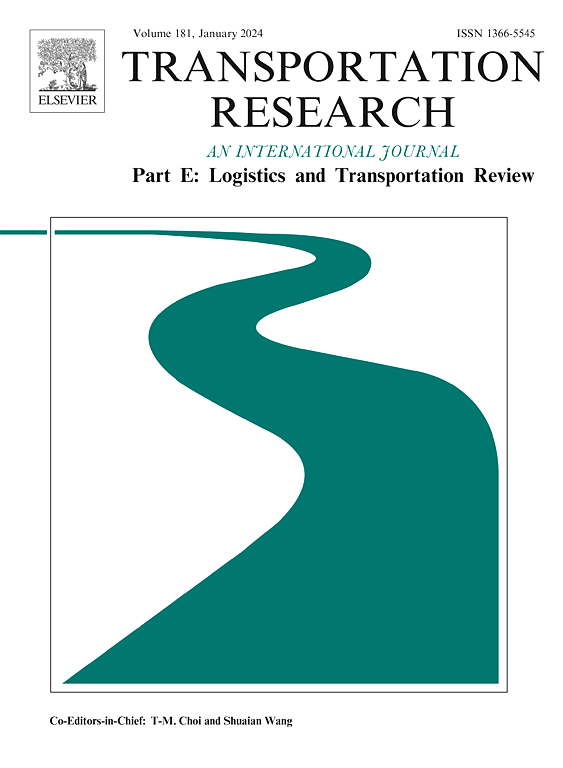Graph Convolutional Networks for logistics optimization: A survey of scheduling and operational applications
IF 8.3
1区 工程技术
Q1 ECONOMICS
Transportation Research Part E-Logistics and Transportation Review
Pub Date : 2025-03-21
DOI:10.1016/j.tre.2025.104083
引用次数: 0
Abstract
Graph Convolutional Networks (GCNs) have emerged as pivotal tools in addressing intricate optimization and scheduling challenges within logistics, encompassing canonical problems such as the Vehicle Routing Problem (VRP), Traveling Salesman Problem (TSP), and dynamic job scheduling. This survey presents a comprehensive exploration of GCN applications, emphasizing their capacity to model spatial–temporal dependencies and their seamless integration with advanced paradigms, including reinforcement learning and hybrid optimization techniques. By leveraging these capabilities, GCNs have demonstrated enhanced scalability and interpretability, rendering them indispensable for large-scale, real-time logistics systems. The review extends to real-world implementations, illustrating GCN-driven innovations in resource allocation, traffic management, and supply chain optimization. In addition, the study critically examines persistent challenges—ranging from processing dynamic graphs to ensuring ethical deployment through fairness and sustainability. The paper concludes with forward-looking recommendations, advocating for the evolution of GCN architectures to adeptly manage real-time decision-making and uncertainty in increasingly complex logistical landscapes.
图卷积网络(Graph Convolutional Networks,GCNs)已成为解决物流领域复杂的优化和调度难题的关键工具,包括车辆路由问题(Vehicle Routing Problem,VRP)、旅行推销员问题(Traveling Salesman Problem,TSP)和动态工作调度等典型问题。本调查报告全面探讨了 GCN 的应用,强调了 GCN 的时空依赖建模能力以及与强化学习和混合优化技术等先进范式的无缝集成。通过利用这些能力,GCN 展示了更强的可扩展性和可解释性,使其成为大规模实时物流系统不可或缺的工具。综述扩展到现实世界的实施,说明了 GCN 在资源分配、交通管理和供应链优化方面的创新。此外,该研究还批判性地探讨了长期存在的挑战,包括处理动态图形、通过公平性和可持续性确保道德部署等。论文最后提出了一些前瞻性建议,主张发展 GCN 架构,以便在日益复杂的物流环境中巧妙地管理实时决策和不确定性。
本文章由计算机程序翻译,如有差异,请以英文原文为准。
求助全文
约1分钟内获得全文
求助全文
来源期刊
CiteScore
16.20
自引率
16.00%
发文量
285
审稿时长
62 days
期刊介绍:
Transportation Research Part E: Logistics and Transportation Review is a reputable journal that publishes high-quality articles covering a wide range of topics in the field of logistics and transportation research. The journal welcomes submissions on various subjects, including transport economics, transport infrastructure and investment appraisal, evaluation of public policies related to transportation, empirical and analytical studies of logistics management practices and performance, logistics and operations models, and logistics and supply chain management.
Part E aims to provide informative and well-researched articles that contribute to the understanding and advancement of the field. The content of the journal is complementary to other prestigious journals in transportation research, such as Transportation Research Part A: Policy and Practice, Part B: Methodological, Part C: Emerging Technologies, Part D: Transport and Environment, and Part F: Traffic Psychology and Behaviour. Together, these journals form a comprehensive and cohesive reference for current research in transportation science.

 求助内容:
求助内容: 应助结果提醒方式:
应助结果提醒方式:


